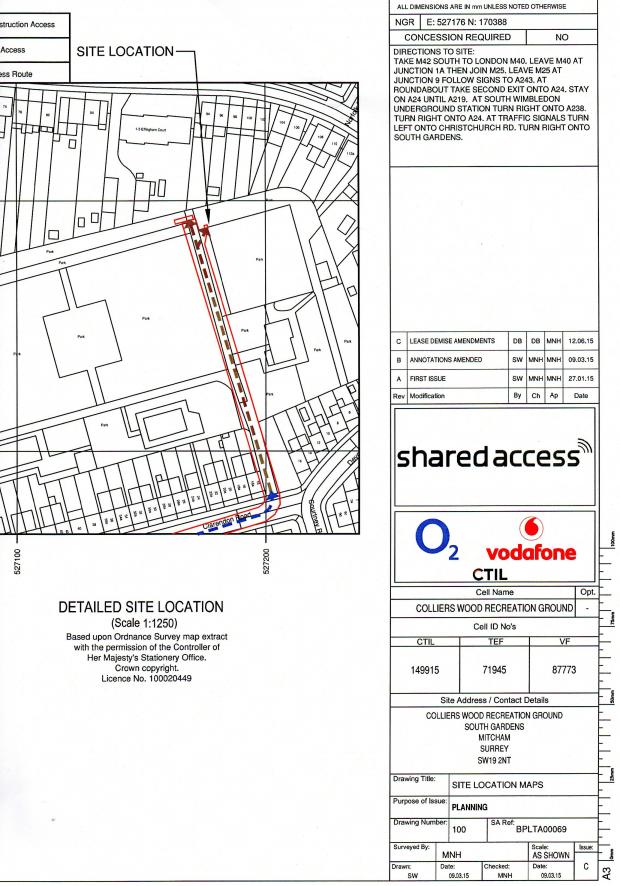[Importantissimo studio del prof. Belpomme, finalmente pubblicato ma non ancora open-source, che si spera metterà freno al mare di bugie dette sinora riguardo ad EHS e MCS, in quanto ha individuato dei marker di malattia e soprattutto ha messo questi ultimi rispettivamente in relazione con la esposizione ai CEM e alle sostanze chimiche.
Ergo adesso sarà molto più difficile, per certune persone, AFFERMARE FALSAMENTE che non esistono prove delle suddette relazioni e che, nel caso della EHS, alla base di tutto ci sia l’EFFETTO NOCEBO.
Basta bugie! Perché i malati di EHS e MCS non possono continuare a pagare il fatto di avere delle malattie scomode!
La traduzione in Italiano dell’ABSTRACT segue l’ABSTRACT stesso.]
Rev Environ Health. 2015 Dec 1;30(4):251-71. doi: 10.1515/reveh-2015-0027.
By:
Belpomme D, Campagnac C, Irigaray P.
ARTICLE INFO
Article history
Received: 11 September, 2015
Accepted: 2 November, 2015
Keywords
Biomarkers
Cerebral hypoperfusion
Electrohypersensitivity
Limbic system
Multiple chemical sensitivity
ABSTRACT
Much of the controversy over the causes of electrohypersensitivity (EHS) and multiple chemical sensitività (MCS) lies in the absence of both recognized clinical criteria and objective biomarkers for widely accepted diagnosis.
Since 2009, we have prospectively investigated, clinically and biologically, 1216 consecutive EHS and/or MCS-self reporting cases, in an attempt to answer both questions. We report here our preliminary data, based on 727 evaluable of 839 enrolled cases: 521 (71.6%) were diagnosed with EHS, 52 (7.2%) with MCS, and 154 (21.2%) with both EHS and MCS.
Two out of three patients with EHS and/or MCS were female; mean age (years) was 47.
As inflammation appears to be a key process resulting from electromagnetic field (EMF) and/ or chemical effects on tissues, and histamine release is potentially a major mediator of inflammation, we systematically measured histamine in the blood of patients.
Near 40% had a increase in histaminemia (especially when both conditions were present), indicating a chronic inflammatory response can be detected in these patients. Oxidative stress is part of inflammation and is a key contributor to damage and response.
Nitrotyrosin, a marker of both peroxynitrite (ONOO°-) production and opening of the blood-brain barrier (BBB), was increased in 28% the cases. Protein S100B, another marker of BBB opening was increased in 15%.
Circulating autoantibodies against O-myelin were detected in 23%, indicating EHS and MCS may be associated with autoimmune response.
Confirming animal experiments showing the increase of Hsp27 and/or Hsp70 chaperone proteins under the influence of EMF, we found increate Hsp27 and/or Hsp70 in 33% of the patients.
As most patients reported chronic insomnia and fatigue, we determined the 24 h urine 6-hydroxymelatonin sulfate (6-OHMS)/creatinin ratio and found it was decreased ( < 0.8) in all investigated cases.
Finally, considering the self-reported symptoms of EHS and MCS, we serially measured the brain blood flow (BBF) in the temporal lobes of each case with pulsed cerebral ultrasound computed tomosphygmography.
Both disorders were associated with hypoperfusion in the capsulothalamic area, suggesting that the inflammatory process involve the limbic system and the thalamus.
Our data strongly suggest that EHS and MCS can be objectively characterized and routinely diagnosed by commercially available simple tests. Both disorders appear to involve inflammation-related hyper-histaminemia, oxidative stress, autoimmune response, capsulothalamic hypoperfusion and BBB opening, and a deficit in melatonin metabolic availability; suggesting a risk of chronic neurodegenerative disease. Finally the common co-occurrence of EHS and MCS strongly suggests a common pathological mechanism.

[IT]
ABSTRACT
Gran parte della controversia sulle cause di Elettro-Ipersensibilità (EHS) e Sensibilità Chimica Multipla (MCS) sta nell’assenza sia di criteri clinici riconosciuti che di biomarcatori oggettivi per una diagnosi che sia largamente riconosciuta.
Sin dal 2009, abbiamo studiato prospetticamente, da un punto di vista clinico e biologico, 1216 casi auto-riferiti di EHS e/o MCS in successione, nel tentativo di rispondere ad entrambe le domande.
Riportiamo qui i nostri dati preliminari, basati su 727 casi valutabili di 839 registrati: 521 (71,6%) sono stati diagnosticati con EHS, 52 (7,2%) con MCS, e 154 (21,2%) sia con EHS che MCS.
Due pazienti su tre con EHS e/o MCS erano femmine; l’età media era di 47 anni.
Poichè l’infiammazione sembra essere un processo chiave derivante dagli effetti di campi elettromagnetici (CEM) e/o agenti chimici sui tessuti, e il rilascio di istamina è potenzialmente un principale mediatore dell’infiammazione, abbiamo sistematicamente misurato l’istamina nel sangue di pazienti.
Intorno al 40% aveva un aumento della istaminemia (specialmente quando entrambe le condizioni erano presenti), indicando che una risposta infiammatoria cronica può essere rilevata in questi pazienti.
Lo stress ossidativo è parte dell’infiammazione ed è un elemento chiave nel contribuire a danni e risposta. La Nitrotirosina, un marker sia della produzione di perossinitrito (ONOO ° -) che di apertura della Barriera EmatoEncefalica (BEE ), era aumentata nel 28% dei casi.
La proteina S100B, un altro marcatore di apertura BEE, era aumentata nel 15% dei casi.
Nel 23% dei casi sono stati rilevati autoanticorpi circolanti contro la O-mielina, indicativi del fatto che EHS ed MCS possono essere associate ad una risposta autoimmune.
A conferma degli esperimenti sugli animali che mostravano un aumento delle chaperonine Hsp27 e/o Hsp70 sotto l’influenza dei CEM, abbiamo trovato Hsp27 e/o Hsp70 aumentate nel 33% dei pazienti.
Poichè la maggior parte dei pazienti hanno riferito insonnia e stanchezza cronica, abbiamo determinato il rapporto 6-idrossimelatonina solfato (6-OHMS)/creatinina sulla urina delle 24 ore e trovato che era ridotto (<0,8) in tutti i casi esaminati.
Infine, considerando i sintomi auto-riferiti di EHS e MCS, abbiamo misurato in modo seriale il flusso di sangue al cervello nei lobi temporali di ciascun caso con la tomosfigmografia computerizzata cerebrale a ultrasuoni pulsati.
Entrambi i disturbi sono stati associati ad ipoperfusione nell’area capsulotalamica, suggerendo che il processo infiammatorio coinvolge il sistema limbico e il talamo.
I nostri dati suggeriscono fortemente che EHS e MCS possono essere oggettivamente caratterizzate e routinariamente diagnosticate tramite semplici test disponibili in commercio.
Entrambi i disturbi sembrano coinvolgere iper-istaminemia in relazione con l’infiammazione, stress ossidativo, risposta autoimmune, ipoperfusione capsulotalamica e apertura della BEE, e un deficit nella disponibilità metabolica di melatonina; cosa che suggerisce un rischio di malattie neurodegenerative croniche.
Infine, la comune concomitanza di EHS e MCS, suggerisce fortemente un meccanismo patologico comune.
Source/Fonte:
http://www.ncbi.nlm.nih.gov/pubmed/26613326














